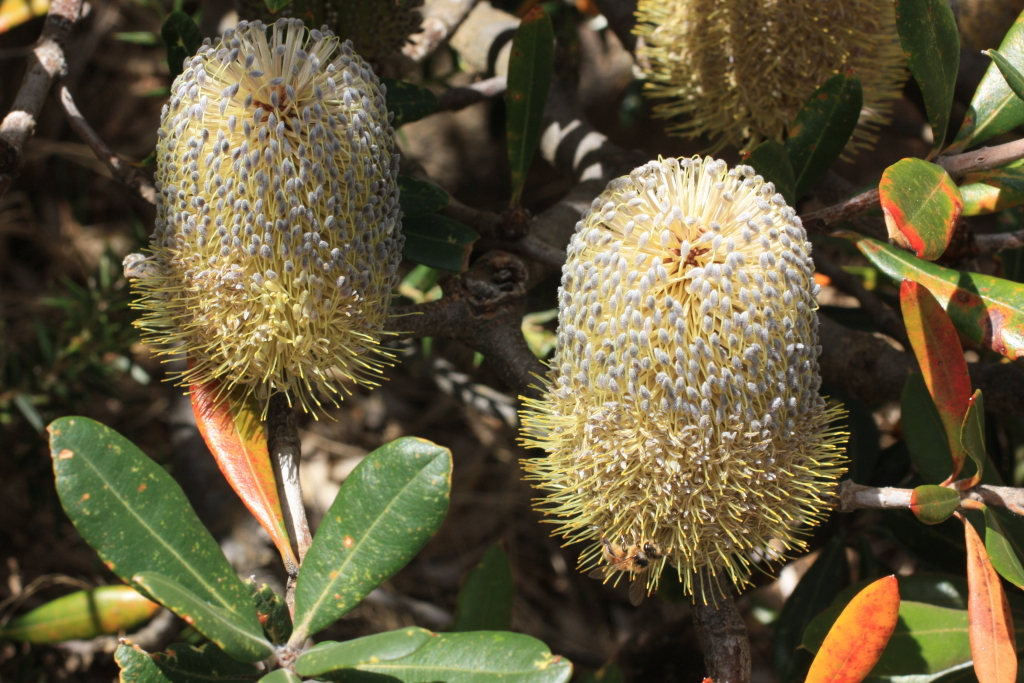Banksia saxicola
A.S.George Rock BanksiaSpreading shrub or erect tree to c. 13 m high; lignotuber absent; bark smooth to rough, grey; branchlets finally glabrescent. Leaves often whorled, lanceolate to obovate, 4–12 cm long, 1–4 cm wide, discolorous, upper surface dark green, shiny (rusty-pubescent when young), lower surface white-tomentose, midrib hirsute with rusty hairs; margins entire or with a few short teeth (juvenile or subadult leaves), slightly recurved; apex sometimes mucronate; petiole 5–10 mm long. Inflorescence 3.5–8 cm long, 5–6 cm wide at anthesis. Tepals 19–22 mm long, yellow-cream with greyish limb, hairy, deciduous; style curved slightly, yellowish, deciduous. Follicles to c. 60, 12–20 mm long, velvety at first, finally glabrescent except at base; opening spontaneously on ripening or over several years; body of seed more or less lunate, 9–11 mm long, wing 14–19 mm long. Flowers mainly Jan.–Mar.
GipP, GGr, EGL, WPro. Apparently restricted to higher peaks and sheltered gullies and slopes in the Grampians and on Wilsons Promontory (e.g. Sealers Cove), usually in rocky sites.
Once regarded as a variant of Banksia integrifolia but differing from that species in its thinner, smoother bark, pale yellow flowers with a greyish limb, summer flowering period, larger follicles that retain their seeds longer, and in its not strictly coastal distribution.
Possible hybrids with Banksia marginata have been observed in the Grampians.
Jeanes, J.A. (1996). Proteaceae. In: Walsh, N.G.; Entwisle, T.J., Flora of Victoria Vol. 3, Dicotyledons Winteraceae to Myrtaceae, pp. 830–887. Inkata Press, Melbourne.
 Spinning
Spinning
